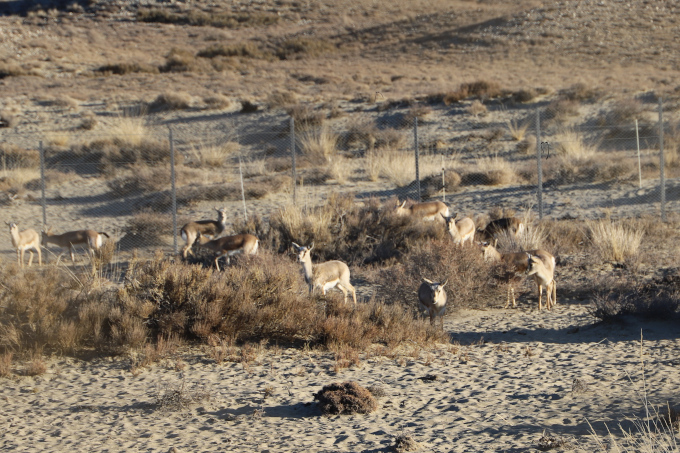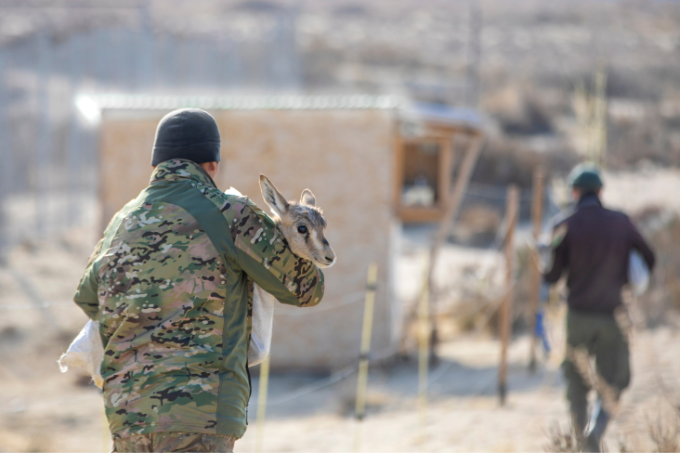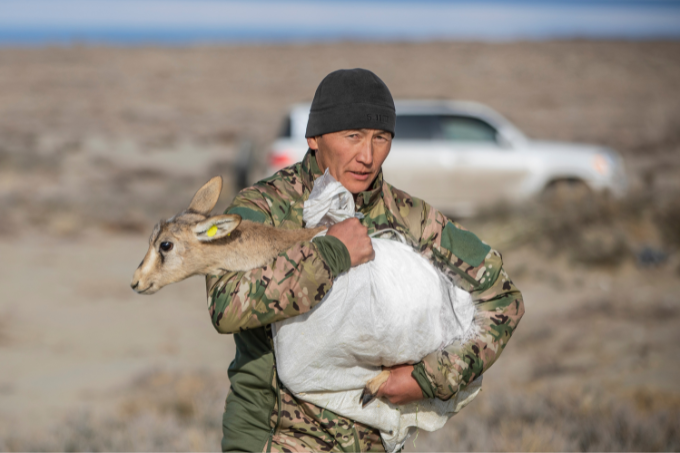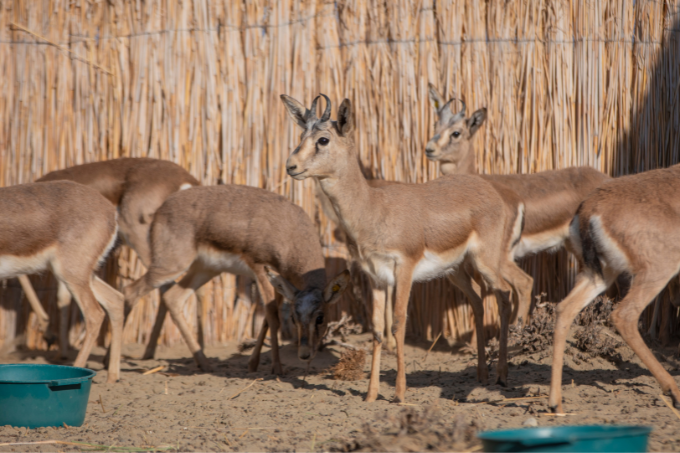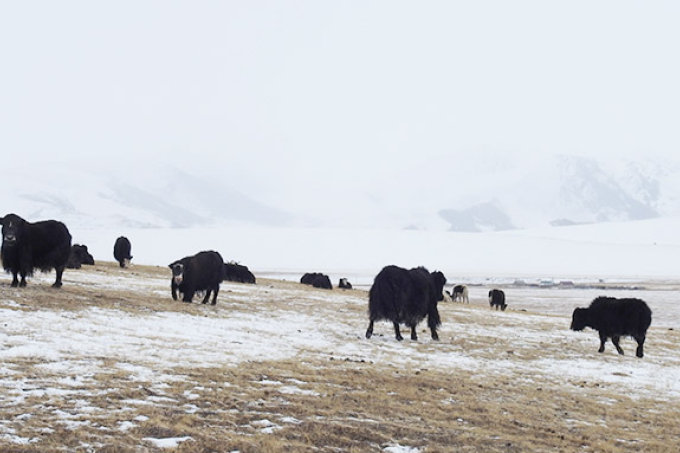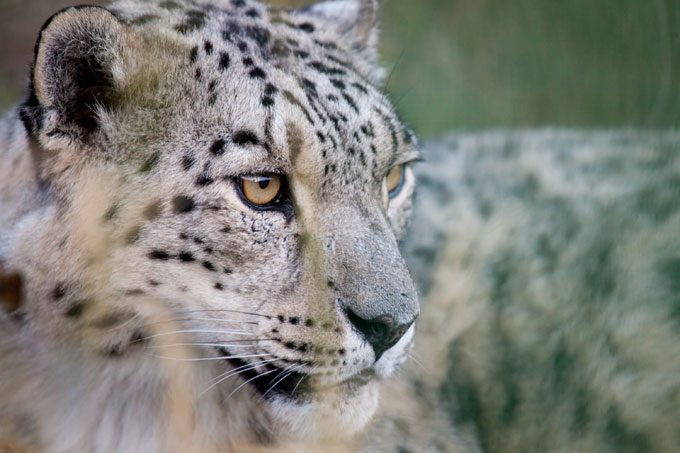Reintroducing the goitered gazelle in Kyrgyzstan
NABU supports the preservation of a locally extinct species
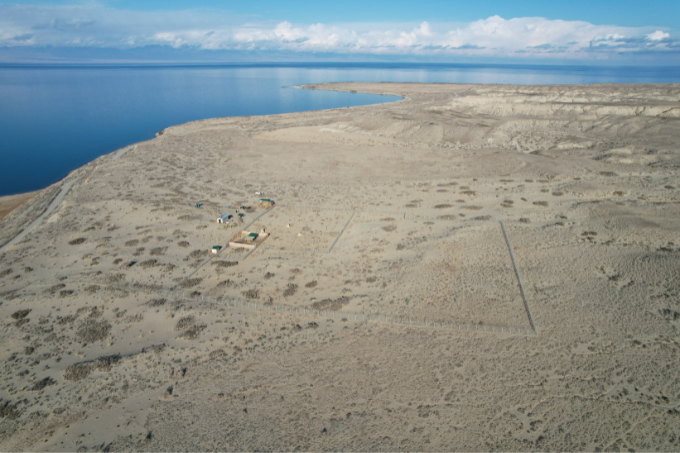
Drone image of the goitered gazelle reintroduction enclosure near Yssykköl Lake in northeastern Kyrgyzstan - photo: NABU/ Ivan Turkovskiy
The goitered gazelle (Gazella subgutturosa) inhabits Asian steppes and semi-deserts and is the northernmost distributed gazelle species in the world. Its habitat ranges from the Caucasus through Iran, southern Central Asia and the Arabian Peninsula, to the Gobi Desert and northern China. The little gazelle was once at home in Kyrgyzstan too, but has in the meantime become locally extinct in the area. NABU is therefore supporting a project to reintroduce this species.
Poaching and the destruction of its habitat through the expansion of industry, agriculture and livestock are particular threats to the goitered gazelle. Border fences also endanger the continued survival of the species, as these can interrupt their migratory routes and become fatal traps. The past few decades were especially marked by the decline of the animals. Today, there are an estimated 42,000 to 49,000 adult individuals of the species worldwide. They have entirely disappeared from the wild in Kyrgyzstan. The International Union for Conservation of Nature (IUCN) therefore categorizes the species as vulnerable to extinction.
Implementation of the project
The reintroduction project is being implemented by our two Kyrgyz partners, the Argali Foundation and the Ilbirs Foundation. In the pilot phase, the two conservation NGOs created a species-appropriate enclosure and brought the first 15 juvenile animals from the "Jeyran" breeding station in Uzbekistan to the Kyrgyz reintroduction facility. The pilot phase was financed by the GEF Small Grants Programme in Kyrgyzstan and through private funding.
In 2022, NABU sponsored the expansion of the gazelle enclosure from 0.25 hectares to an area of approximately twelve hectares. Additional juvenile goitered gazelles were also transported to the reintroduction enclosure, in order to establish a stable and genetically diverse population there.
The project is accompanied by environmental education measures to combat poaching and illegal trade. The project partners plan to release the first goitered gazelles into the wild in 2026. This benchmark will depend on whether the animals have reproduced to a sufficient extent by that point.
-
Goitered gazelles are carefully carried from the transport vehicle after their journey from Uzbekistan to Kyrgyzstan. - photo: NABU/ Ivan Turkovskiy
-
The goitered gazelles are wrapped in special sacks for the journey. - photo: NABU/ Ivan Turkovskiy
-
Arrived in the Kyrgyz reintroduction facility, the young goitered gazelles observe their new surroundings. - photo: NABU/ Ivan Turkovskiy
-
Multiple small goitered gazelles in the reintroduction enclosure in Kyrgyzstan. - photo: NABU/ Ivan Turkovskiy
Project facts
Project title
Reintroduction of the goitered gazelle in Kyrgyzstan
Country
Kyrgyzstan
Period
2021 to 2030
Partners
Kyrgyz conservation NGOs: Argali Foundation, Ilbirs Foundation
With this project we are contributing to the following Sustainable Development Goals (SDGs)
SDG 11, SDG 15 and SDG 17
RELATED PROJECTS
NABU realises its project „Sustainable yak husbandry in the Kyrgyz Tien Shan Mountains” as part of the Federal Environment Ministry's Advisory Assistance Programme in Middle and Eastern Europe states, Caucasus and Central Asia. more →
Snow leopards are among the most endangered big cats on earth. Only 4,000 to 6,400 animals now live in the wild. NABU has been committed to the survival of snow leopards in Kyrgyzstan since 1999 and has extended its commitment to Tajikistan, Pakistan and Nepal. more →

